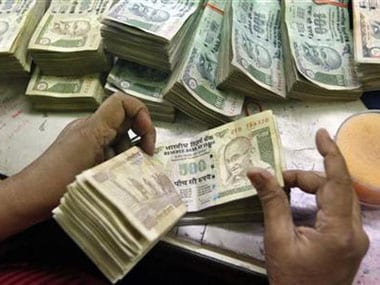The seven-pronged strategy announced by the government to improve the condition of India’s state-run banks has given some hopes of revival of these entities. Rating agency Crisil, in a note, said that the focus on efficiently using the capital, rather than merely growing the business size, is a paradigm shift, but cautioned that the programme’s success will depend upon its ‘relentless implementation’. The government package, coined as ‘Indradhanush’ touches upon several incremental reform measures such as the creation of a Bank Board Bureau (BBB), linking the compensation of banks’ top management to performance, improving governance standards, focussing on quality of business rather than the quantity and fresh additional capital infusion within one month. The government’s promise to set discoms right is encouraging, but one needs action on this front. But where Indradhanush lacks an action plan is with respect to addressing the issue of Non-Performing Assets (NPAs). Besides an economic slowdown, the NPA woes state-run banks currently face is due to large-scale directed lending to high-risk sectors, the banks’ inability to recover money from large, politically connected wilful defaulters and due to the absence of a strong bankruptcy law. [caption id=“attachment_2395416” align=“alignleft” width=“380”]  Reuters image[/caption] The government should act on these three points if banks’ NPA problems need to be addressed effectively: One, banks need autonomy to operate. Unless the government ceases to be the single largest stake holder in these entities, this autonomy will remain only on paper. The fact remains that the responsibility of financial inclusion (through various social security schemes) and risky lending rests with the public banks, while private sector banks largely play safe. For instance, a mere mention in the Prime Minister Narendra Modi’s Independence Day speech asking banks to get each of their 1.25 lakh branches to lend to start-up ventures that have Adivasi or Dalit youths, would put enormous pressure on sarkari banks. They will be forced to show they have done well in this regard by the time the next review meeting from the finance ministry comes up. In a hurry to do this, banks may not be able to follow due credit assessments and such decisions can backfire and as history has shown, add to the NPA pile. A similar thing happened with the Jan Dhan Yojan, which is a much needed financial inclusion programme for an under-banked country like India. While the intention of the programme is noble, there was enormous pressure on government banks to meet huge targets within a short time, resulting in several duplicate and inactive accounts. Here again, a major part of the burden fell upon state-run banks, who had to spent considerable amount of their time to meet these targets. Second, a well-thought-out plan to recover the existing bad loans from large wilful defaulters is key to resolve the menace of NPAs in the banking sector. An action plan for this was missing in the Indradhanush document. If the government is determined to bring down the bad loans of banks it owns, it should go strongly after large wilful defaulters and get the money back. The inability of banks to recover money for wilful defaulters, within the current structure of laws and processes, is quite apparent. An example of this is the Vijay Mallya-owned Kingfisher Airlines, which owes Rs 7,000 crore to a host of banks (a majority of which are state-run banks). Banks have clearly failed so far in making any meaningful recoveries from Mallya. The government must step to facilitate recovery in such cases. Kingfisher is just one case. As per data obtained from the All India Bank Employees Association, there are 7035 cases of wilful defaulters that have bad loans to the tune of Rs 58,792 crores as on 31 March, 2015. “The bad loans in the banks as on 31-3-2015 has risen to Rs 2,97,000 crores excluding another Rs 4,03,004 crores of bad loans of 530 corporate companies shown as rescheduled and restructured loans under CDR (corporate debt restructuring) scheme. Bad loans struck up in top 30 borrowal accounts of PSBS as on 31-3-2015 is Rs. 1,21,162 crores," it notes. Third, a strong bankruptcy law, like in the west, is necessary for banks to deal with crisis-ridden companies and promoters. Presently, there are no strong laws that enable banks recover money from wilful defaulters. In most such cases, the defaulters seek legal recourse to delay the process of loan recovery. For instance, in Kingfisher case, eventhough Kolkata-based United Bank of India had tagged Kingfisher as a wilful defaulter, the company got a favourable order from the court on technical grounds. Banks haven’t made any progress thereafter in this case. An effective bankruptcy law can offer a decent exit route to the promoter and freedom for the bank to take over the company before the value of the underlying asset deteriorates sharply. In the 2015 Union Budget, finance minister, Arun Jaitley had outlined government’s intention to formulate a bankruptcy law, but even after a year there hasn’t been any progress on this. The government has been slow in responding to the measures from the Reserve Bank of India (RBI) in resolving the situation involving stressed assets in the industry. The RBI has brought in rules to prevent the misuse of the loan restructuring facility by making the process expensive for banks and early identification of stress mandatory. Tackling stressed assets (currently 11 per cent of the total bank loans) is an uphill task but not an impossible one. Unless the government (which owns banks that control 70 per cent of the industry) steps in with determination to resolve the issue, it isn’t going to be easy job for banks.
The government should act on these three points if banks’ NPA problems need to be addressed effectively.
Advertisement
End of Article


)

)
)
)
)
)
)
)
)



